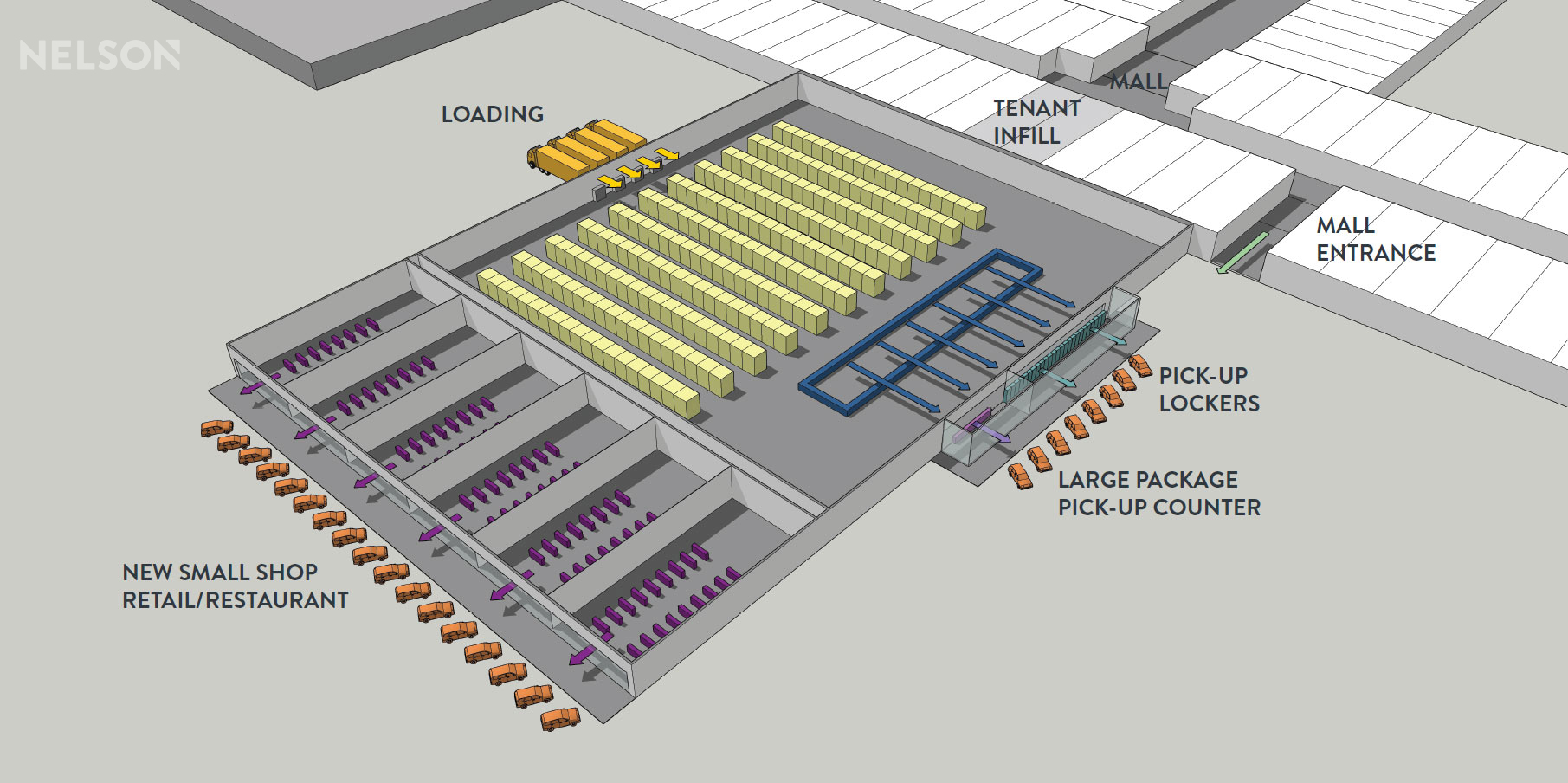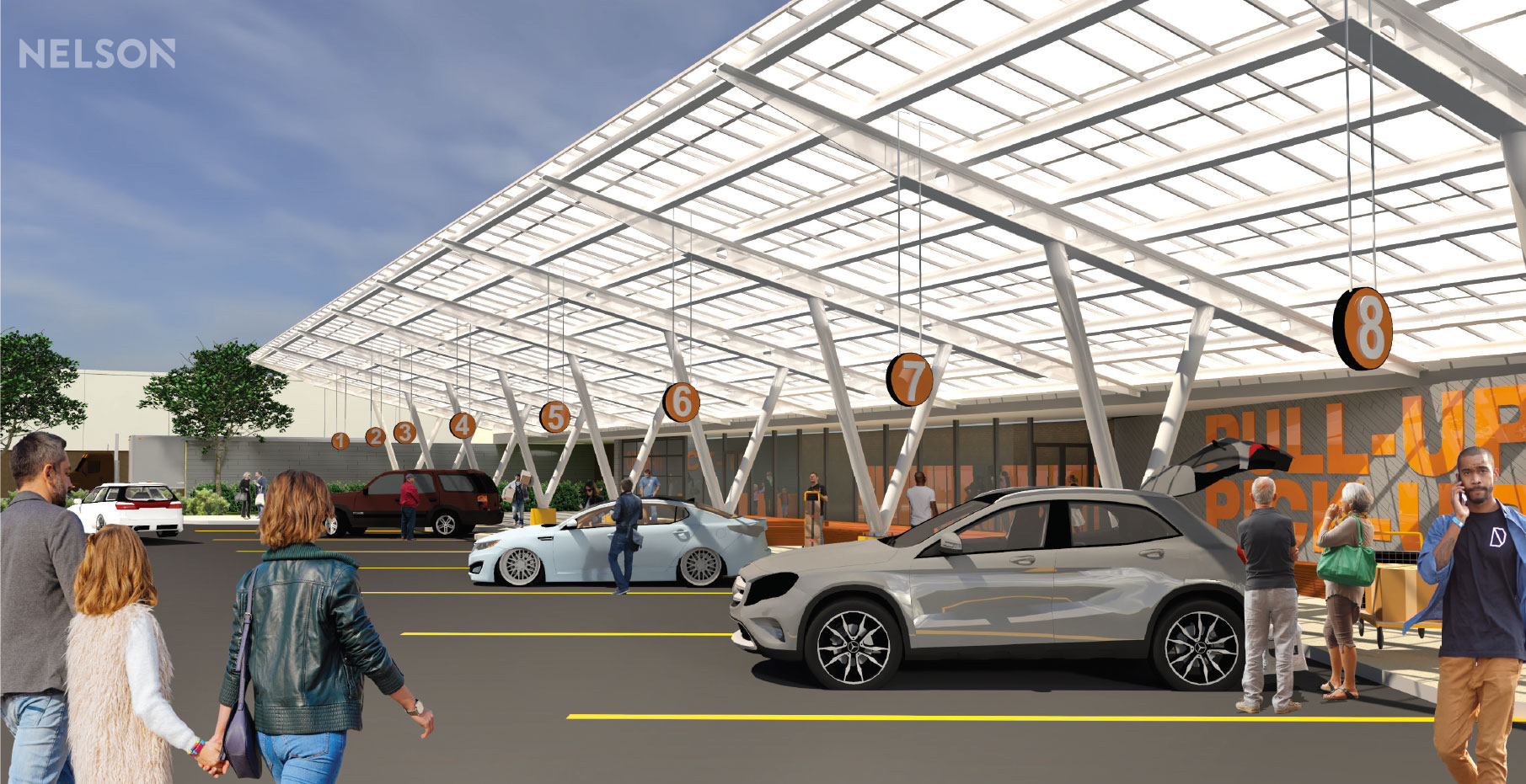Last month, one of the world's most well-known retailers filed for bankruptcy. Barneys is almost 100 years old and will close 15 of its 22 stores as part of a major restructure, and they aren’t alone. Barneys is among dozens of other retailers filing for bankruptcy this year. The question is, how do landlords transform this valuable empty space? The solution lies in repurposing existing square footage.
Brick-and-mortar environments can no longer offer consumers a singular purpose. Developments must be multi-functional destinations, hybrid facilities that support retail’s changing landscape and benefit the consumer, retailer, and the developer. The goal is to create physical environments that offer both a differentiated customer experience but also one that allows for faster product access.
With a national vacancy rate over 10% and a market that’s inundated with empty anchor space, the challenge will be to repurpose these once thriving mall beacons to become multi-purpose destinations that are both functional and still aesthetically pleasing for developers and remaining anchor tenants. The solution for dark anchors should not be to simply "plug the hole" with traditional solutions, but to look toward "out-of-the-box" concepts. A more innovative distribution center concept can offer a longer-lasting, versatile solution focusing on engagement, helping with supply chain, and better addressing today’s speed of transaction. The ideal repurposed distribution center offers three distinct uses.
First, is a warehouse “lite” facility offering last-mile delivery services – a smaller format transportation hub focusing on last-mile logistics to deliver items to the end user as fast as possible. The repurposed distribution center could leverage key elements from previous anchors, like the loading dock, receiving area and freight elevators. And keeping truck traffic to the backside of the development, ideally with a separate entrance, prevents a disruption to guest traffic flow.
Next, a robust click-and-collect facility, from parcel lockers to drive-through pick-ups, it will allow customers, as well as third-party delivery vendors, faster access to merchandise. This could also support newer concepts like cloud kitchens that rely on multiple delivery providers and a seamless pick-up process. Supporting new business-models from BOPIS to ridesharing, will keep the concept fresh and flexible, to support the growing ecommerce market.
 One solution for dark anchors is to convert them to warehouse “lite” facilities, which offer last-mile delivery services. The repurposed distribution center could leverage key elements from previous anchors, like the loading dock, receiving area and freight elevators. Rendering: NELSON
One solution for dark anchors is to convert them to warehouse “lite” facilities, which offer last-mile delivery services. The repurposed distribution center could leverage key elements from previous anchors, like the loading dock, receiving area and freight elevators. Rendering: NELSON
The third and final usage will be to leverage the street-facing facade for new, small format retail and restaurants. Providing unique localized offerings and a varied tenant mix will keep the development feeling current. These new consumer-facing environments should offer plenty of opportunities for consumer engagement and provide a new draw for legacy tenants within the development.
The refreshed exterior will help increase street traffic while creating an aesthetically pleasing façade to the much-needed back-of-house functions within the warehouse and click-and-collect environments. The small-format footprint could entice new offerings from start-ups to online-first retailers, providing developers and guests an elevated and differentiated experience.
This multi-faceted concept could support various industries beyond just traditional retail, such as breweries, beer distributers, and a consumer-facing beer garden or tasting room. With the rise of farm-to-table dining, it could be home to a grow house, farmers market, and signature-chef restaurant. Or even provide a footprint for cloud kitchens, a food truck park, and designated pick-up for food delivery apps. The options are endless when the concept supports consumers, ecommerce and supply chain.
Related content: In the age of Amazon there's nowhere to go but up
Moreover, many of today’s anchor spaces are large, unarticulated boxes that do not address today’s consumer needs and wants. The architecture is often forgettable and many of the exteriors haven’t been renovated since the original tenant opened their doors. This strategy may have been appropriate when most shopping centers were inward facing, enclosed malls, but today’s shoppers are looking for differentiated environments that not only speak to their unique communities, but also support their online habits to offer a more seamless, convenient experience.
So, while shopping centers have been turning inside out, replacing long stretches of back of house exterior walls with engaging outward facing tenant facades, the market has now created an opportunity for anchors to participate in this transformation.
This revolution starts with converting these unarticulated boxes into vibrant offerings that are approachable and engaging. Implementing a hybrid anchor solution provides a win for consumers, retailers, and developers, and will keep the space flexible for innovative new business models and functional for last-mile delivery opportunities. A new concept that merges experience with instant gratification to bring malls into the 21st century.
About the Author
Eric Arter leads the Mixed-Use studio at NELSON where he oversees a multi-disciplinary team serving both domestic and international clients including Simon, Brookfield, Unibail-Rodamco-Westfield, Macerich, Washington Prime Group, Cordish, Lotte and Hyundai Development Company. Eric has over 20 years of experience in mixed-use, retail, office, multifamily, hospitality, restaurant and entertainment projects as well as a background in institutional and industrial projects. Eric’s comprehensive experience and well-rounded skill set provides a unique understanding in support of a collaborative project approach. Projects in which he has played a key role have been the recipient of many awards throughout his career including: AIA Design & Honor Awards, NAIOP Awards and design competitions. Eric earned his Bachelor of Architecture degree from the University of Cincinnati. He is a registered architect, a member of the AIA, ICSC and he is a LEED accredited professional.
Related Stories
Construction Costs | Feb 22, 2024
K-12 school construction costs for 2024
Data from Gordian breaks down the average cost per square foot for four different types of K-12 school buildings (elementary schools, junior high schools, high schools, and vocational schools) across 10 U.S. cities.
MFPRO+ Special Reports | Feb 22, 2024
Crystal Lagoons: A deep dive into real estate's most extreme guest amenity
These year-round, manmade, crystal clear blue lagoons offer a groundbreaking technology with immense potential to redefine the concept of water amenities. However, navigating regulatory challenges and ensuring long-term sustainability are crucial to success with Crystal Lagoons.
Architects | Feb 21, 2024
Architecture Billings Index remains in 'declining billings' state in January 2024
Architecture firm billings remained soft entering into 2024, with an AIA/Deltek Architecture Billings Index (ABI) score of 46.2 in January. Any score below 50.0 indicates decreasing business conditions.
University Buildings | Feb 21, 2024
University design to help meet the demand for health professionals
Virginia Commonwealth University is a Page client, and the Dean of the College of Health Professions took time to talk about a pressing healthcare industry need that schools—and architects—can help address.
AEC Tech | Feb 20, 2024
AI for construction: What kind of tool can artificial intelligence become for AEC teams?
Avoiding the hype and gathering good data are half the battle toward making artificial intelligence tools useful for performing design, operational, and jobsite tasks.
Engineers | Feb 20, 2024
An engineering firm traces its DEI journey
Top-to-bottom buy-in has been a key factor in SSOE Group’s efforts to become more diverse, equitable, and inclusive in its hiring, mentoring, and benefits.
Building Tech | Feb 20, 2024
Construction method featuring LEGO-like bricks wins global innovation award
A new construction method featuring LEGO-like bricks made from a renewable composite material took first place for building innovations at the 2024 JEC Composites Innovation Awards in Paris, France.
Codes and Standards | Feb 20, 2024
AISC, AIA release second part of design assist guidelines for the structural steel industry
The American Institute of Steel Construction and AIA Contract Documents have released the second part of a document intended to provide guidance for three common collaboration strategies.
Student Housing | Feb 19, 2024
UC Law San Francisco’s newest building provides student housing at below-market rental rates
Located in San Francisco’s Tenderloin and Civic Center neighborhoods, UC Law SF’s newest building helps address the city’s housing crisis by providing student housing at below-market rental rates. The $282 million, 365,000-sf facility at 198 McAllister Street enables students to live on campus while also helping to regenerate the neighborhood.
MFPRO+ News | Feb 15, 2024
UL Solutions launches indoor environmental quality verification designation for building construction projects
UL Solutions recently launched UL Verified Healthy Building Mark for New Construction, an indoor environmental quality verification designation for building construction projects.

















